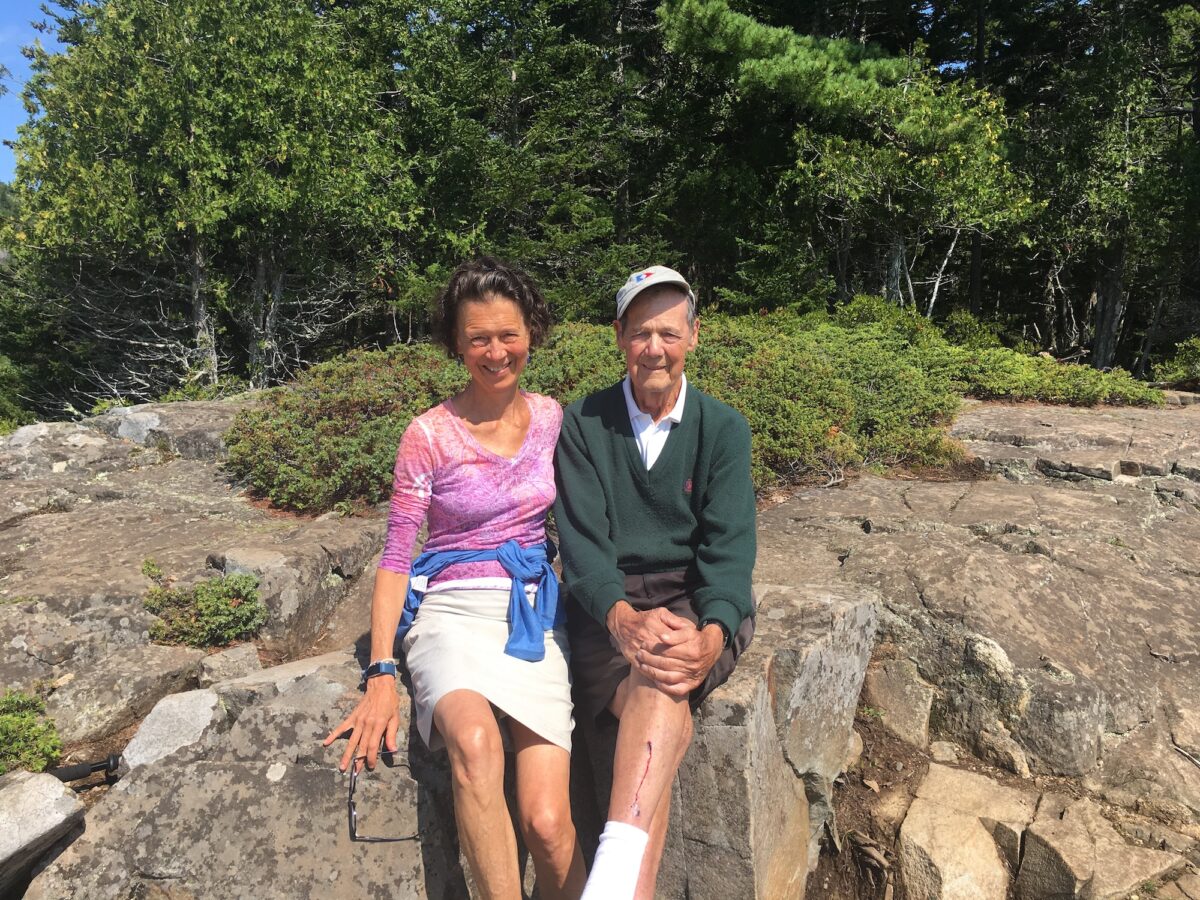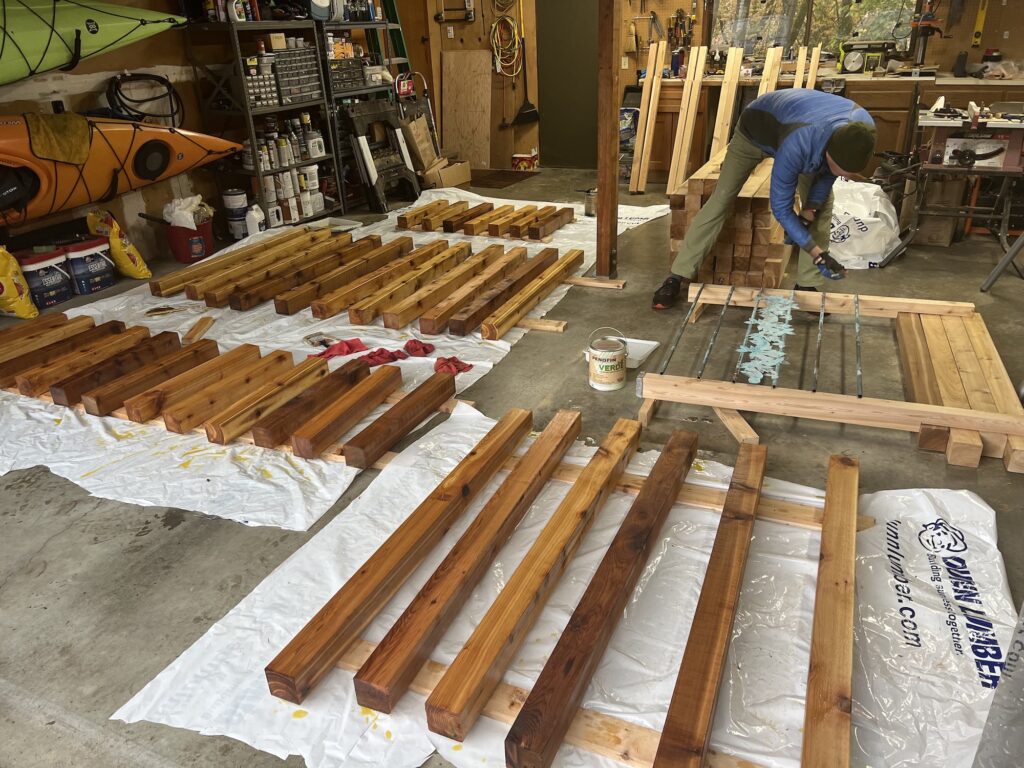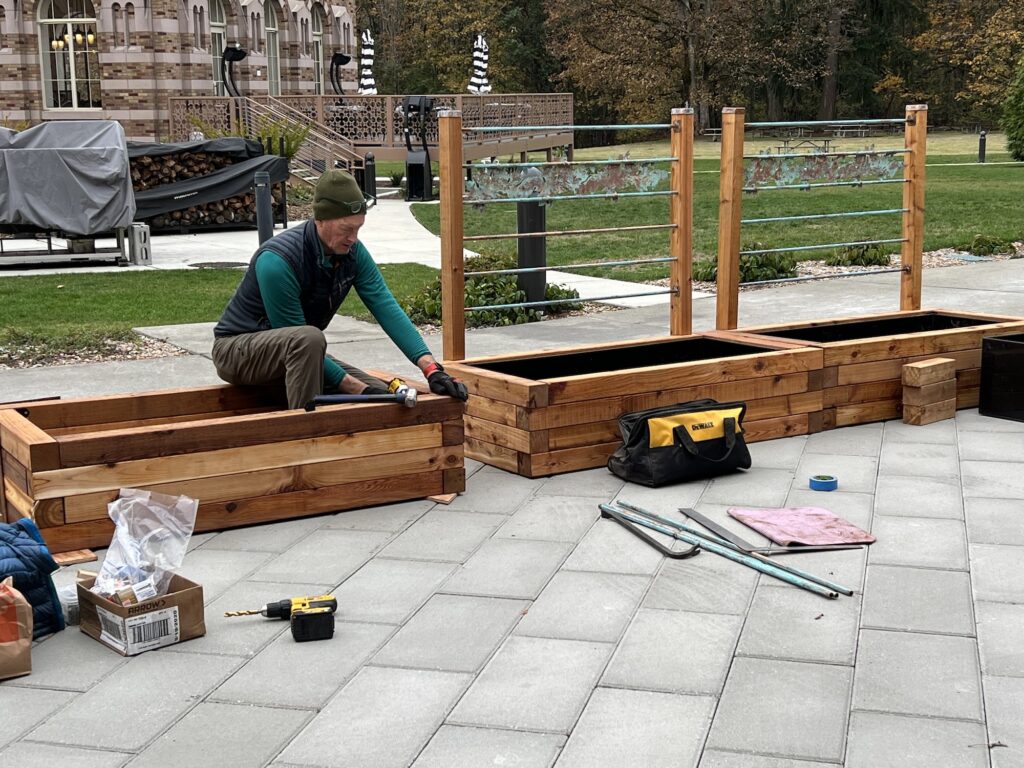Inspiring communities to connect with nature

When Susan Carlson looks back on her career in the environmental field, she sees three big influences: her mother, her father and Mother Nature. Together, they gave Carlson the motivation to make a difference to the world — and the drive to help coordinate the creation of the Environmental Education & Research Center (EERC) at Saint Edward State Park.
The UW Bothell-led EERC makes use of the park as an outdoor classroom and living laboratory for research and learning. Community members, including K-12 students, also experience enhanced opportunities to connect with and learn from nature.
Learning about the world — and herself
Carlson’s own love of the outdoors developed early in life, growing up in Ithaca, New York, and mid-coast Maine where nature was never far away. Her parents sent her to an outdoor preschool and as the oldest sibling, she was often pulled into her father’s adventures. Carlson remembers some of those experiences viscerally. “He would take me night sailing in the epic dark waters off coastal Maine, with the aurora borealis in the night sky above,” she said. “The boat stirred up the phosphorescent diatoms in the cold Atlantic below. It was so surreal and so emblematic of my father’s fluidity across science and spirituality.”
While Carlson views her father as the philosopher in the family, her mother was more of an activist. She taught English as a Second Language to Cornell’s international faculty wives, helping them get a toe hold in Ithaca society. She also transformed abandoned lots into community gardens in Washington, D.C. Thrift, frugality and a Do-It-Yourself outlook on life was central to the family ethos. Challenges were often met with an “If not you, then who?” approach to getting a job done.
While in elementary school, Carlson was deeply affected by her father’s explanation that the human population was growing exponentially while the earth’s resources remained finite. When Carlson asked what she could do, her father’s response, “If not you, then who?” motivated her to organize her first environmental organization — an ecology club made up of three friends who met in shrubs behind her house. They conducted “salamander monitoring expeditions” in the creeks and gorges of Ithaca.
In high school, Carlson traveled to Cape Cod to clean up oiled birds after a major oil spill off the George’s Bank. By college, she was studying natural resource management at the University of Maine. She jumped at the chance to do an internship with The Wilderness Society in Washington, D.C. That internship evolved into a paid fellowship which ultimately launched a 30-year career with several national environmental NGOs in the district.
Along the way, Carlson directed EnvironMentors, an environmental science mentorship program for diverse high school students interested in environmentally related college degree programs. Carlson helped scale the program to include chapters in 14 partner universities. Working with faculty and administrators to launch the EnvironMentors chapters at across the country kindled Carlson’s interest in the powerful role universities could play in the environmental education ecosystem, particularly related to high school to college bridging programs for diverse youth.
A vision for environmental education and research
After 30 years in the nation’s capital, it was time to follow a dream to live closer to nature. Carlson and her husband, Eric, moved back to his hometown in the Puget Sound region, settling into a house in large part because of its proximity to Saint Edward State Park.
She envisioned the park as a place for community connections to nature and potentially to fulfill a dream to help create a university-led environmental education center of which there are few nationally. Having just moved from the East Coast and knowing very few people, Carlson consulted with her father on how to get a campaign underway and who could help. His first words were, “If not you, then who?” His main advice was “to just get the right people in a room.” This set the stage for an upcoming three-year period of building support for the EERC.
During this period, Carlson presented at community and state park commission meetings, met with state park leadership, North Shore legislators, and UW faculty and administrators. She played a central role in early fundraising and secured and helped to direct the EERC’s year-long planning process for community engagement.
Soon, some of the larger features of the future EERC began to fall into place when the right people joined together. A lease between Washington State Parks and Daniels Real Estate included 2,000 square feet for the EERC; state Rep. Gerry Pollet sponsored a planning grant for the EERC’s programming; former senator David Frockt secured a capital construction grant to renovate a former gym annex for the EERC’s facility; former UW Bothell chancellor Wolf Yeigh awarded the EERC a three-year capacity building grant; the EERC’s Faculty Oversight Committee was formed, with professors Dr. Warren Gold and Dr. Santiago Lopez serving as the EERC’s faculty directors, and Lily Cason was hired as the EERC’s program manager.
The years between 2017 and 2020 seemed like something of a windfall for the EERC. Then the COVID pandemic hit. Renovating the gym annex during the pandemic resulted in supply chain delays and cost overruns. The architect’s design for the EERC facility included a garage door that would open to an Outdoor Learning Area (OLA), yet construction funds were exhausted renovating the EERC’s interior. Carlson’s mother died, and what was to be an inspiring Outdoor Learning Area was instead a pile of rubble outside the garage door.
Securing the facility’s finishing touches
In the wake of his wife’s passing, Carlson’s father created a small family foundation in her honor with a mission “to help ensure a cohesive democracy which thrives in an environmentally sustainable world.” The family believes there is no better way to achieve both aspects of this mission than to connect people to nature in ways that inspire stewardship and build community.
A foundation contribution to UW Bothell to finish the OLA was among her father’s first major gifts. This too occurred during the latter part of the pandemic, and further cost overruns resulted in insufficient funds to complete the OLA as envisioned by the EERC’s architects. At this point, running out of resources, Susan’s architect husband volunteered to build the final details of a trellis, planters and bench supports in their garage. The now completed OLA is dedicated to Susan’s parents, Sam and Mary Lawrence, who made sure she spent her formative years outdoors, immersed in nature.


While Carlson will accept that these early-life influences may have lit the spark for the EERC, she is also quick to state the EERC is much less about her as an individual than it is a testament to the power of a positive vision which is shared by many.
“I am in awe of the enormous patience, persistence and perseverance invested by so many UW Bothell faculty, staff and administrators to bring what started as an idea to life as a major new facility and academic center supporting student learning, research and community connections.”
“I sincerely hope hundreds of UW Bothell students will benefit from the EERC and will be inspired to follow their own ideas and vision for the future they want to live in.”
